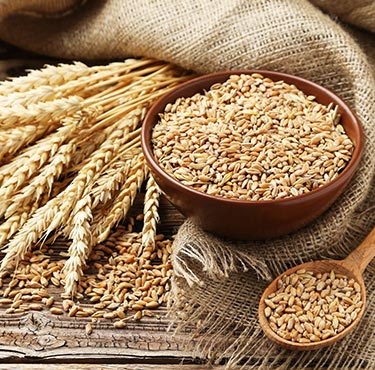Nations in the Middle East house a population of nearly 411 million who depend on wheat consumption. These nations majorly rely on wheat imports to secure food supplies, as they have limited availability of arable land, lack of water resources, along with a fast-growing urban population.
The import volumes across markets in the region show the importance of these markets in 2025. Changes are difficult to comprehend, such as the geopolitical situation, climate, and consumption patterns, which make it difficult to gain influence in these markets.
So how does one begin to understand all this? Businesses involved in wheat imports and exports can trade in these markets with ease by understanding the dynamics of wheat production, imports, and trade across important Middle Eastern nations. There is also a digital platform that facilitates wheat trade in bulk quantities from the highest exporting nations to these regions.
Why is Wheat so Important in the Middle East?
Millions of tons of wheat are procured and consumed annually in the region. Wheat for the production of bread accounts for a majority of demand. Wheat is the main ingredient for everyday meals such as Saudi Samoli buns, Iraqi pita, Turkish loaves, and Egyptian flatbread.
Importing wheat is the only way to fill the gap between supply and demand, as production cannot match the growing demands. Wheat prices in the region are heavily influenced by multiple factors such as trade routes, currency fluctuations, and political stability.
The Middle East continues to be one of the most strategically important markets for wheat exports. The major wheat exports come from the Black Sea region (Russia, Ukraine), Europe, North America, and India.
Wheat Import Market Outlook
Let’s take a look at a few nations across the MENA region that import wheat in bulk:
Egypt is the largest wheat importer in the world, largely due to its rapidly growing population of 107 million (expected to reach 124 million by 2030). Egypt consumes about 20.4 million tonnes (MMT) (Production: 9.3 MMT and Imports: 13 MMT)
Subsidized programs for bread keep wheat demand consistently high. Additionally, because of their inability to mill, Egypt exports flour to other countries in Africa and the Middle East. For exporters, Egypt is a long-term, high-volume buyer, but it is also a price-sensitive market influenced heavily by government tenders and subsidy programs.
Iran’s wheat sector is in a difficult situation, but despite geopolitical challenges, including disputes with Israel, the country has maintained wheat procurement. Iran produces 13 MMT (down from 16MMT) and imports 2.5 MMT (up from 1.3MMT). It was the largest buyer of Russian wheat in May 2025 (542,000 tonnes).
For exporters, Iran is both a strategic buyer and a volatile market, depending on political stability and sanctions. Russian suppliers dominate, but opportunities exist for other exporters during shortages.
Turkey remains a huge wheat consumer, primarily due to bread. Despite lower population growth and evolving food habits among wealthier groups, bread remains central to the diet.
Prices of bread have surged by nearly 50% year-on-year, driven by energy and labor costs. The government continues to intervene in pricing and production. For exporters, Turkey remains a reliable buyer when domestic production is hit by droughts.
Iraq achieved self-sufficiency in wheat for several years, but recent water shortages and desertification have reduced local output. The nation produces 5 MMT (down from 6.3MMT) and imports 2.1 MMT (up from 1.5MMT). Strategic Reserves account for nearly 5.5 million tonnes (enough for one year)
Government incentives, including paying farmers double the global price, helped production in 2024. However, erratic rainfall and desertification remain long-term risks. For exporters, Iraq swings between self-sufficiency and deficit, making it an intermittent but high-potential wheat buyer.
Saudi Arabia’s General Food Security Authority (GFSA) centrally manages wheat imports and reserves. Production lies at about 1.5 MMT (up 25% from last year), while imports are 3.2 MMT (down 10%).
For exporters, Saudi Arabia is a high-value buyer with stable government contracts and an expanding foodservice sector.
What This Means for Global Traders
Exporters can be prepared for government tenders and bulk contracts in Egypt and Saudi Arabia. There are high reward opportunities for food supply to Iran and Iraq even with political risks. Exporters can benefit from subsidies and government procurement programs by maintaining flexible pricing strategies.
Importers and millers in the region can secure wheat supplies early, as weather-driven production declines (like in Turkey and Iraq) can tighten global supplies. Strategic partnerships with reliable suppliers (Russia, Ukraine, India, the EU, and North America) will be key. Diversification of origins helps manage risks associated with geopolitical shocks.
With deep market knowledge, traders can grab hold of the massive opportunities from the most rewarding wheat trade destinations in the years ahead. A digital platform called tradologie.com has brought about the digital era for secure and transparent agro-imports and exports. The platform facilitates trade completely and works only with reputable, verified businesses. One can explore the platform for more information on how they have completely transformed the industry.



